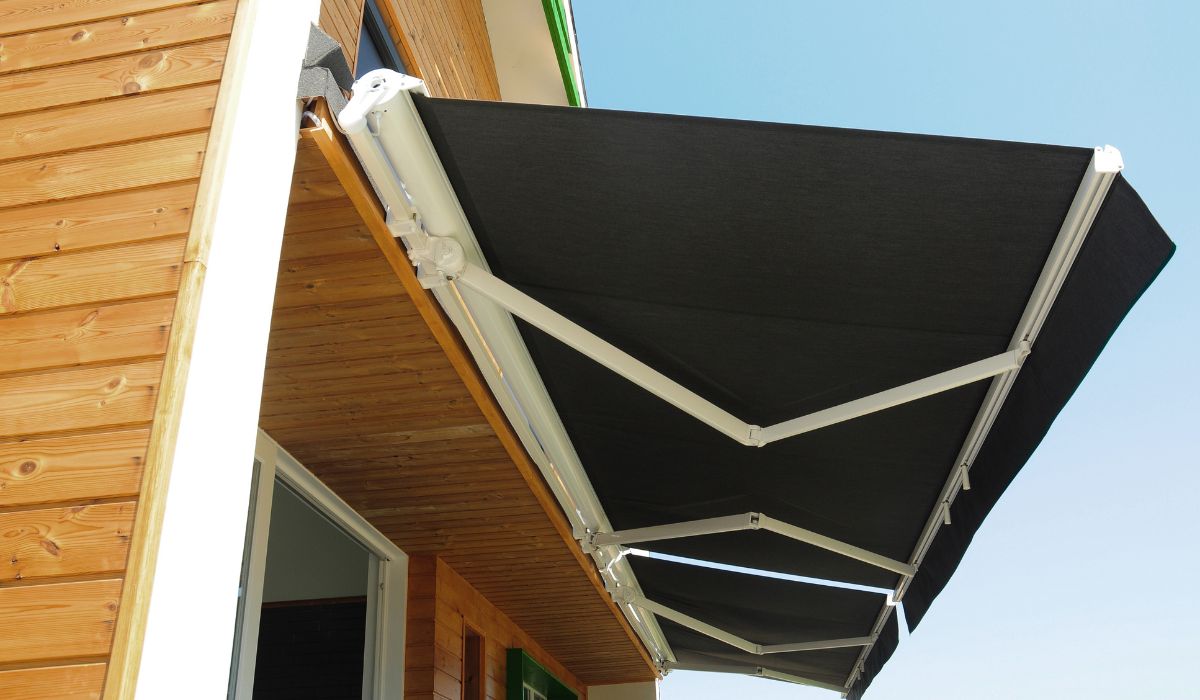When it comes to enhancing both the appearance and function of a home or business, fabric awnings offer a compelling solution. These versatile, stylish additions provide reliable weather protection while adding a decorative touch to exteriors. Whether installed over windows, doors, patios, or storefronts, fabric awnings serve as an excellent investment for homeowners and commercial property owners alike.
In this article, we’ll explore the many benefits of fabric awnings, including their weather-resistant capabilities, aesthetic appeal, energy efficiency, and customizable features.
1. Protection from the Elements
One of the primary advantages of fabric awnings is their ability to protect against various weather conditions. Designed with durable, weather-resistant materials, fabric awnings serve as a barrier between your outdoor space and the harsh elements.
Sun Protection
Fabric awnings provide essential shade during sunny days, blocking harmful UV rays that can damage furnishings, flooring, and skin. By shading windows and outdoor areas, they help reduce the sun’s intensity and make patios, decks, and indoor spaces more comfortable.
Rain and Light Weather Defense
While not intended for extreme weather like heavy snow, fabric awnings are quite effective in offering protection from light rain and drizzle. This means you can enjoy a cup of coffee on your patio even when there’s a light shower, or keep your storefront dry and inviting for customers.
2. Energy Efficiency and Cost Savings
Fabric awnings don’t just offer comfort—they also contribute to energy efficiency. By reducing the amount of direct sunlight entering a building, awnings help lower indoor temperatures. This, in turn, reduces the need for air conditioning, especially in the warmer months.
According to the U.S. Department of Energy, awnings can reduce solar heat gain by up to 77% on west-facing windows. Over time, this can lead to significant savings on energy bills, particularly for homes and businesses in sunny climates.
3. Enhanced Curb Appeal
Beyond their functional advantages, fabric awnings are a stylish enhancement to any building. They come in a wide variety of colors, patterns, and shapes, making it easy to find a design that complements your property’s architecture.
For homeowners, this means boosting curb appeal and potentially increasing property value. For business owners, awnings create a polished, professional look that can help attract foot traffic. A well-designed awning acts as both a shade structure and a visual focal point.
4. Customizable Options to Fit Any Space
Fabric awnings are highly customizable. You can choose from a wide range of fabrics, frames, and styles to match the specific needs of your property. Common styles include:
- Retractable Awnings: Ideal for those who want the flexibility to extend or retract the awning based on weather conditions.
- Fixed Awnings: Permanent structures that offer constant protection and a bold design statement.
- Window and Door Awnings: Smaller awnings that provide shade and protect entryways from weather damage.
Additionally, many fabric awnings can be motorized for easy operation, with features like remote control or weather sensors that automatically retract the awning during high winds.
5. Versatile Applications for Homes and Businesses
Fabric awnings are not one-size-fits-all. Their versatility makes them suitable for a range of applications:
- Residential Use: Fabric awnings can cover patios, decks, balconies, or even carports. They create shaded outdoor living areas that are perfect for relaxing or entertaining guests.
- Commercial Use: Storefront awnings provide shade for walkways, protect merchandise in display windows, and serve as signage when branded with a company logo or name.
Restaurants, cafés, and retail shops often use fabric awnings to extend their usable space, turning sidewalks or courtyards into pleasant outdoor seating areas.
6. Durability and Easy Maintenance
Modern fabric awnings are built to last. Many are made from high-quality materials like acrylic, polyester, or vinyl-coated fabrics, which are resistant to mildew, fading, and tearing. With proper care, fabric awnings can maintain their beauty and function for many years.
Maintenance is straightforward. Regular cleaning with mild soap and water is usually sufficient to remove dirt and prevent mildew. Some fabric types even come with protective coatings that repel water and UV rays, further extending the awning’s lifespan.
7. Environmentally Friendly Choice
By helping to regulate indoor temperatures and reduce reliance on air conditioning, fabric awnings contribute to a more sustainable lifestyle. Some manufacturers also offer eco-friendly fabric options made from recycled materials or fabrics treated with non-toxic coatings.
In areas where sustainability is a priority, installing fabric awnings can be a small but meaningful step toward reducing your carbon footprint.
8. A Smart Long-Term Investment
While the initial cost of a fabric awning varies depending on size, style, and features, it’s generally a cost-effective improvement. When you factor in the energy savings, reduced wear on interior furnishings (due to less UV exposure), and increased enjoyment of outdoor spaces, the return on investment becomes clear.
Additionally, many fabric awnings add visual interest and uniqueness to a property—traits that can enhance resale value or make a commercial location more inviting to customers.
Conclusion
Fabric awnings offer a winning combination of form and function. They provide dependable weather protection, improve energy efficiency, and enhance the visual appeal of any building. Whether you’re a homeowner looking to create a shaded outdoor retreat or a business owner seeking to attract more customers, fabric awnings are a practical and stylish solution.
With endless customization options and benefits that extend across seasons, it’s easy to see why fabric awnings remain a popular choice for both residential and commercial spaces. When thoughtfully chosen and properly maintained, a fabric awning is more than just a shade solution—it’s an investment in comfort, efficiency, and style.





Comments